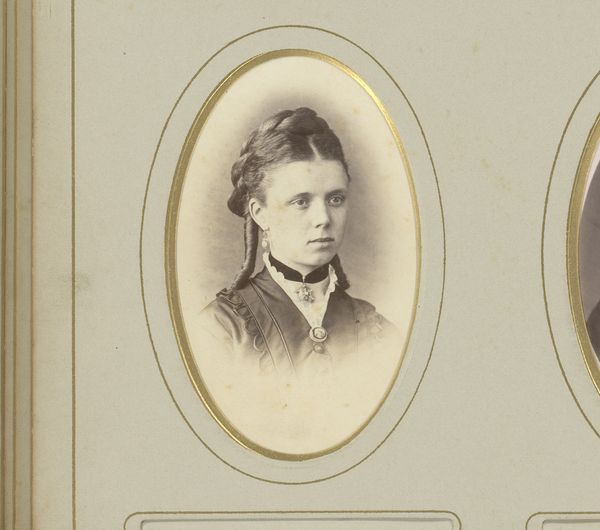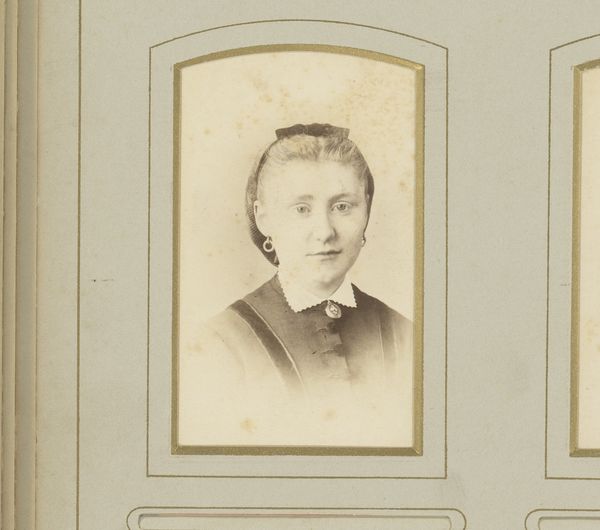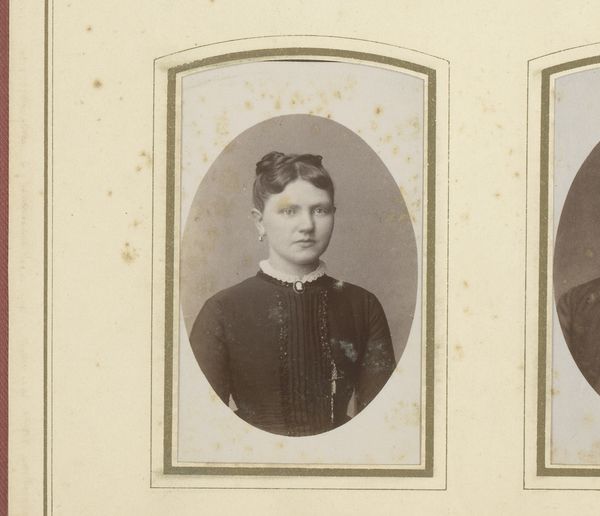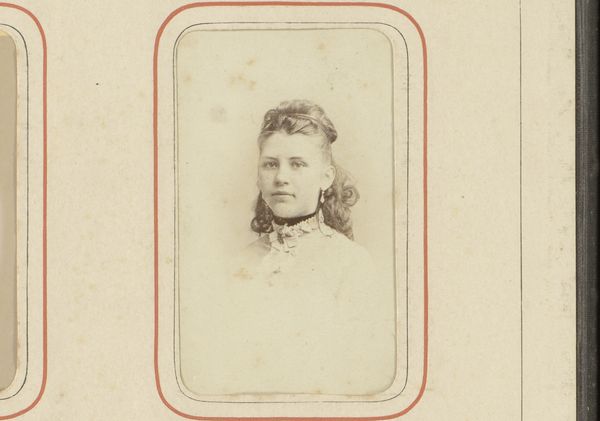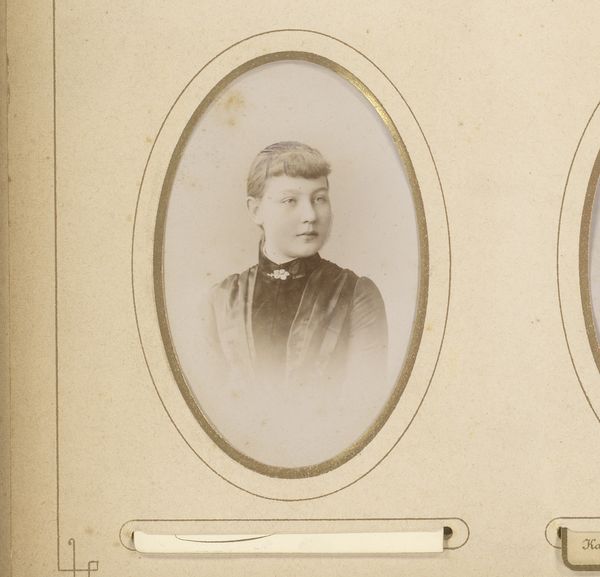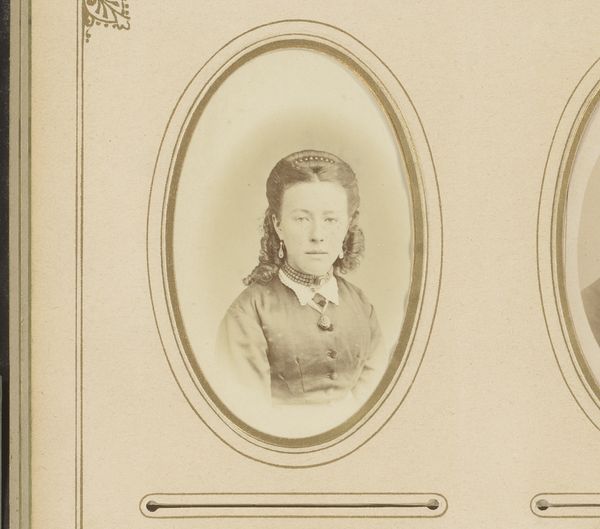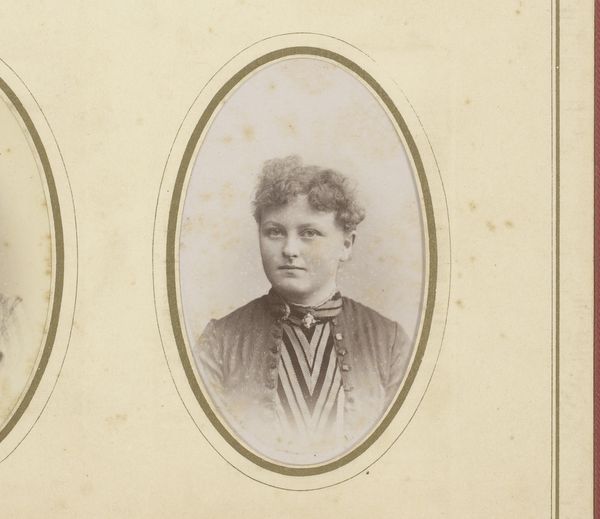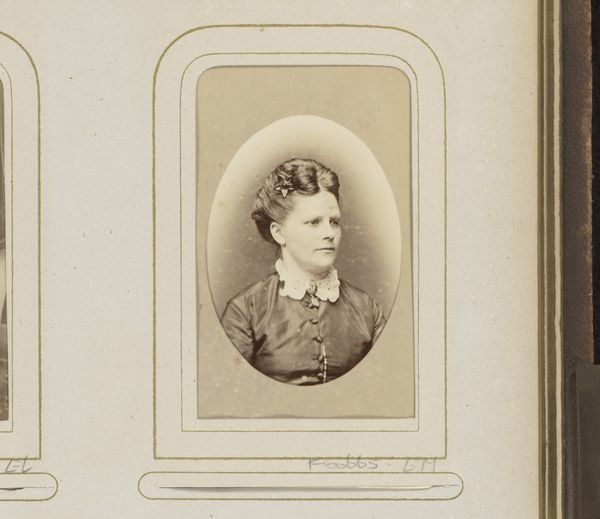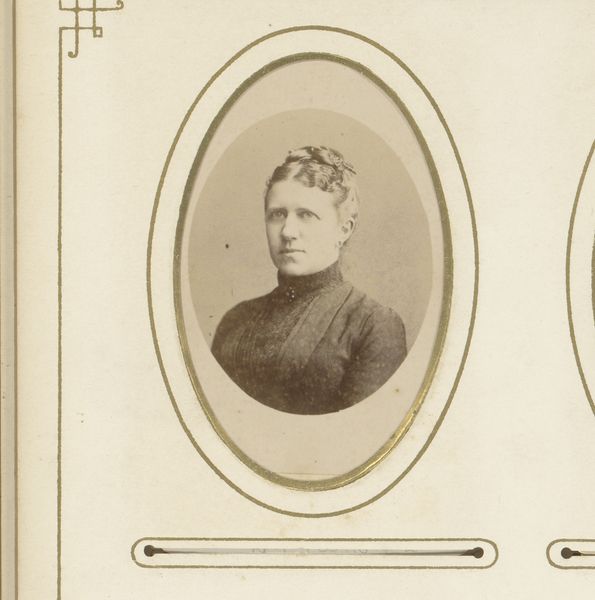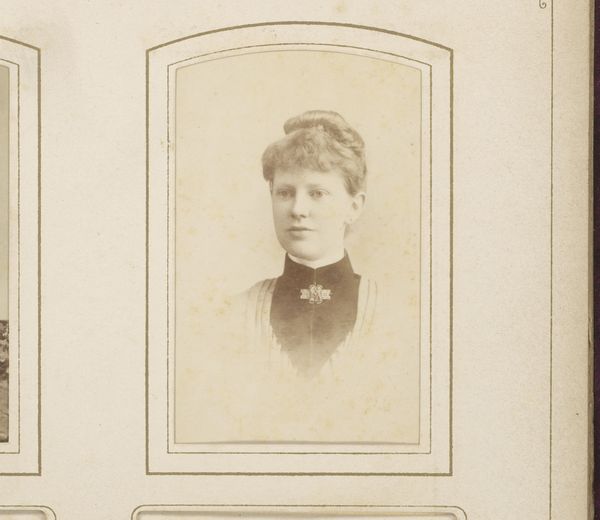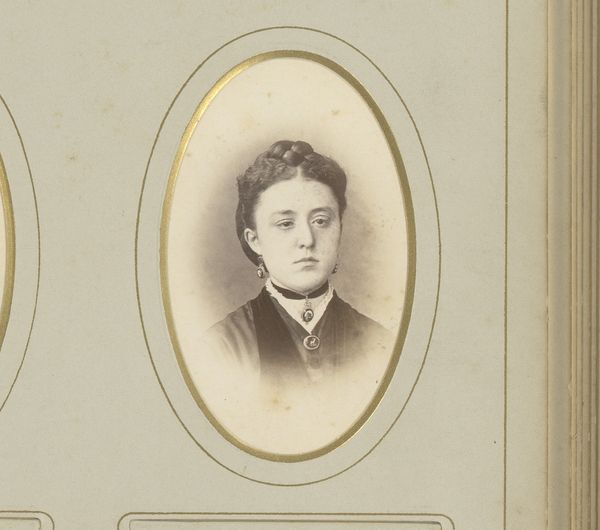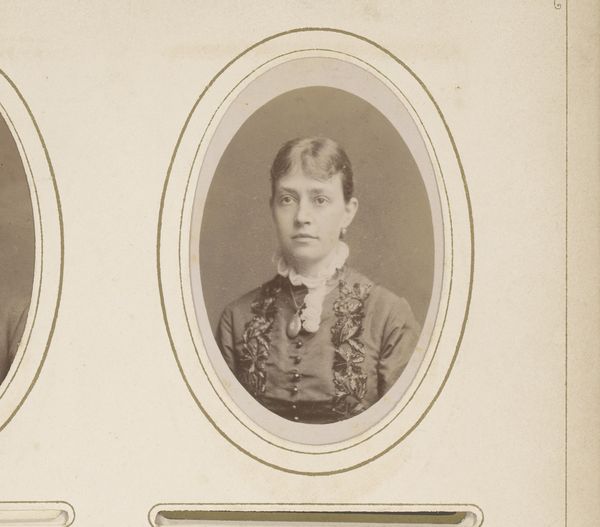
photography
#
beige
#
portrait
#
aged paper
#
antique finish
#
toned paper
#
earth tone
#
photo restoration
#
photography
#
brown and beige
#
warm-toned
#
golden font
#
gold element
Dimensions: height 85 mm, width 51 mm
Copyright: Rijks Museum: Open Domain
Curator: Looking at this portrait, I'm immediately struck by the tonal range—the sepia hues feel both fragile and timeless. Editor: Precisely. What we have here is a photograph titled "Portret van een vrouw met halsketting en vlecht in het haar", dating back to approximately 1865, by Palmer Descamps. The material tells a story: photography in that era was as much about chemistry and process as it was about capturing an image. Curator: Absolutely, the very texture of the aged paper enhances that effect. Her direct gaze and formal pose evoke a sense of Victorian social norms. There's such an intensity in the geometry of her features against that soft backdrop. Editor: Indeed. Photography's role at the time offered the rising middle class the possibility to participate in representation and even craft a certain legacy. Let us not ignore the implications around labor and the rising capitalist means of production surrounding these practices, the making and commissioning of portraiture. Curator: Interesting point about that. Beyond the social context, the artist's control of light and shadow gives real depth, notice especially her hair. Editor: Certainly, that formal consideration impacts our reading and the way she exists for the gaze of the public or other owners. This image prompts me to consider her role. Was it posed in a studio for prosperity? Perhaps she chose specific jewels or a certain hairstyle to conform to a standard for self-definition or acceptance. Curator: Considering it's part of an album, perhaps a way to hold onto lost moments in the wake of large social change in Europe, for her and generations that come afterwards. The object is imbued with so many cultural nuances and meanings, reflecting more than the single subject! Editor: That is so. As this image has matured and aged, the value increases when we appreciate that the artistry itself comes from considering not only an aesthetic appreciation but also labor and modes of production, that might provide avenues into how lives were impacted in a growing industrial society.
Comments
No comments
Be the first to comment and join the conversation on the ultimate creative platform.
